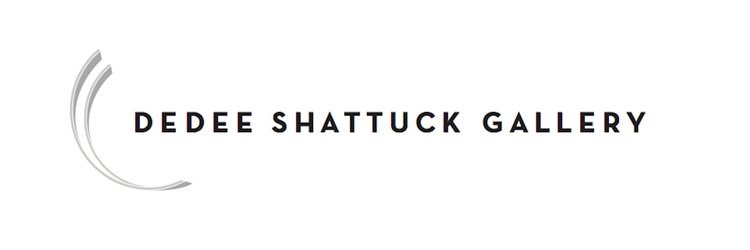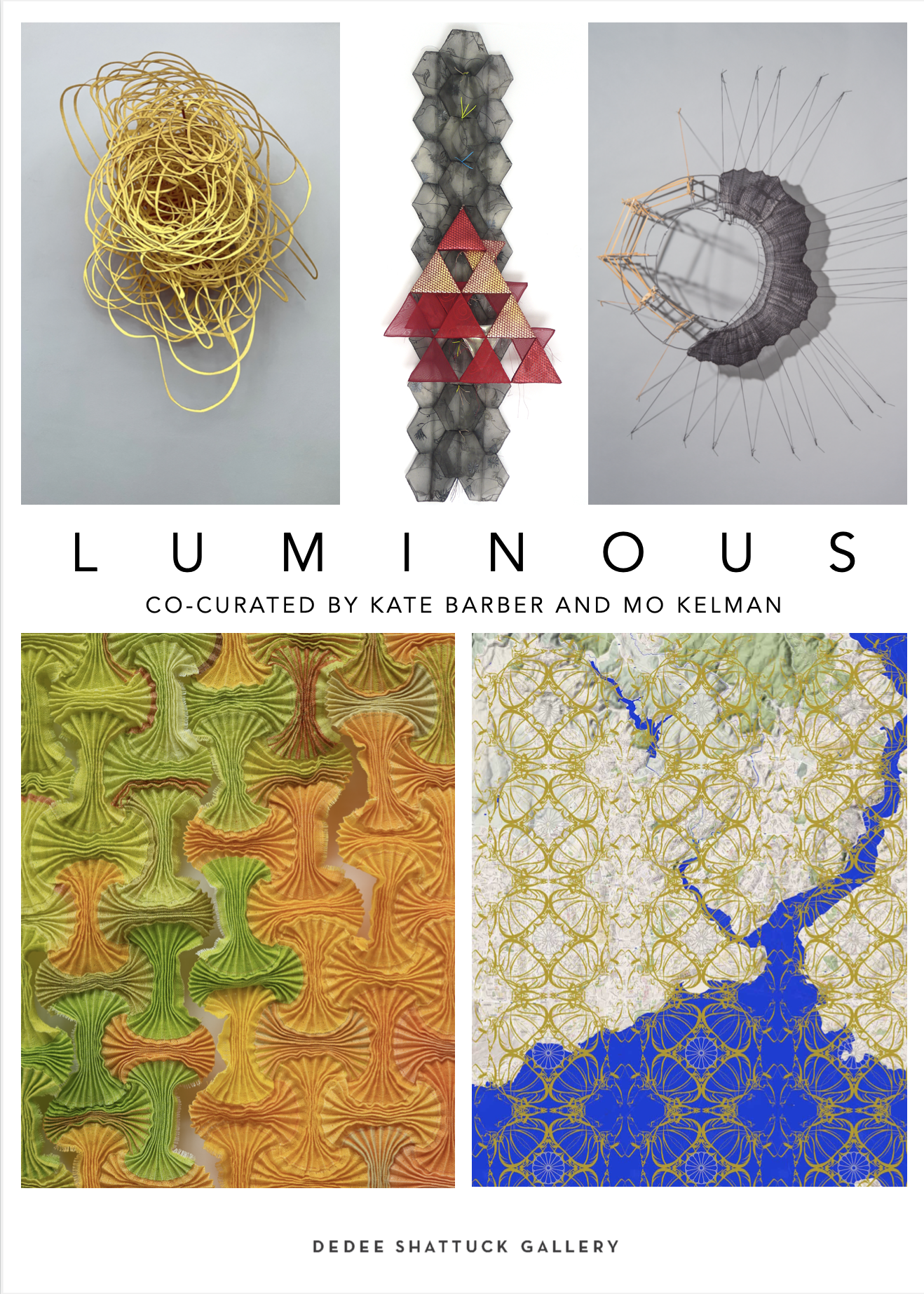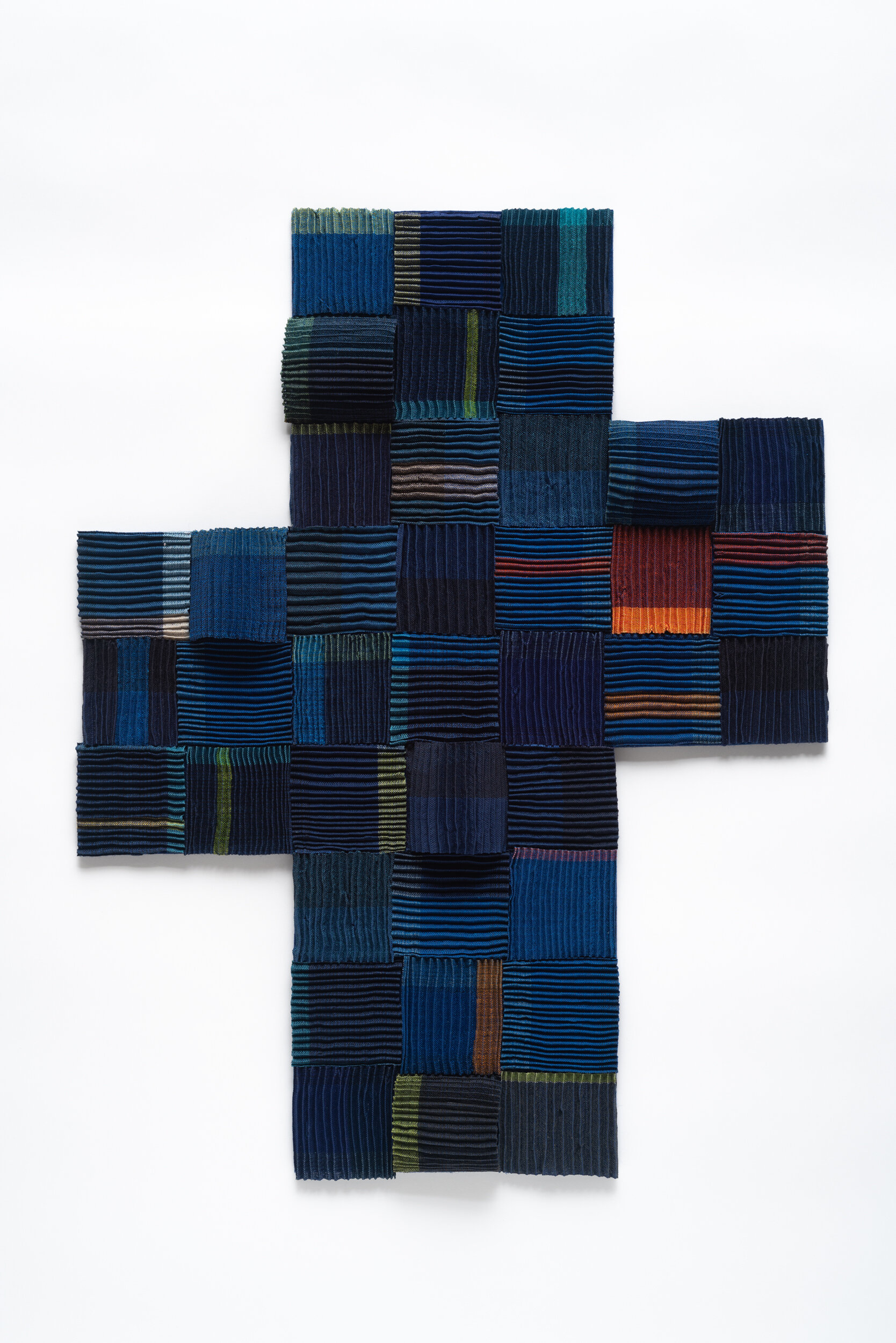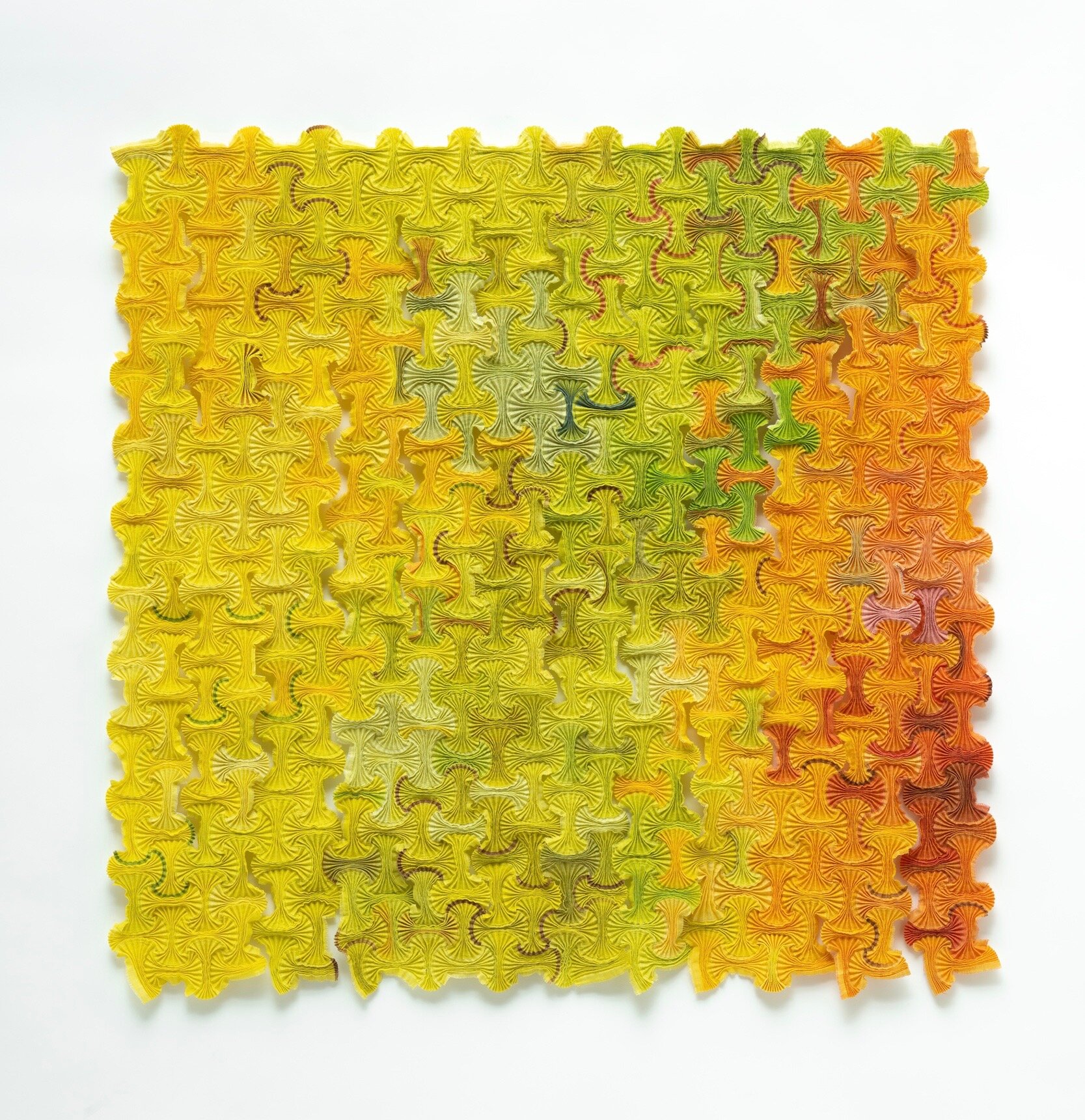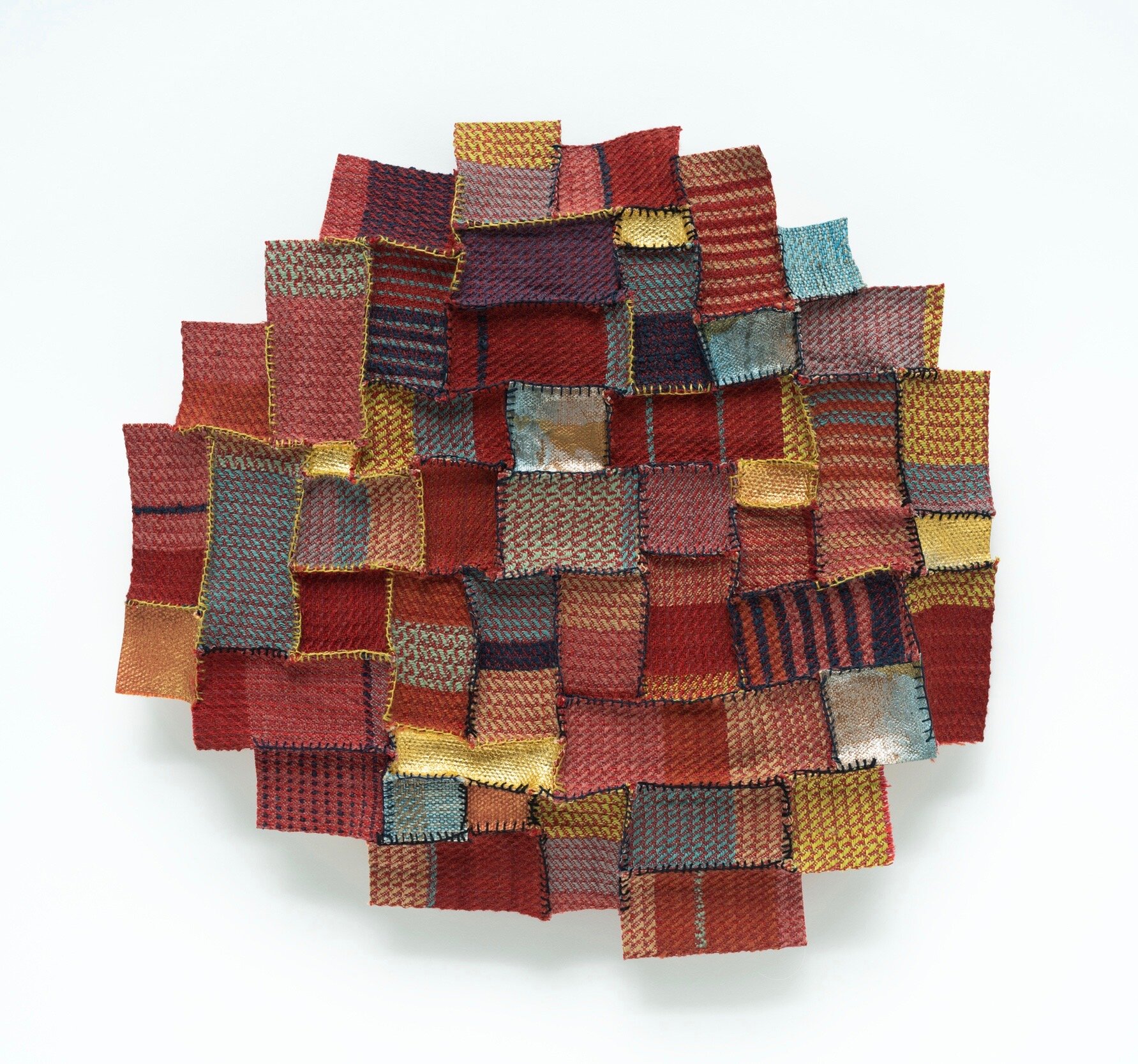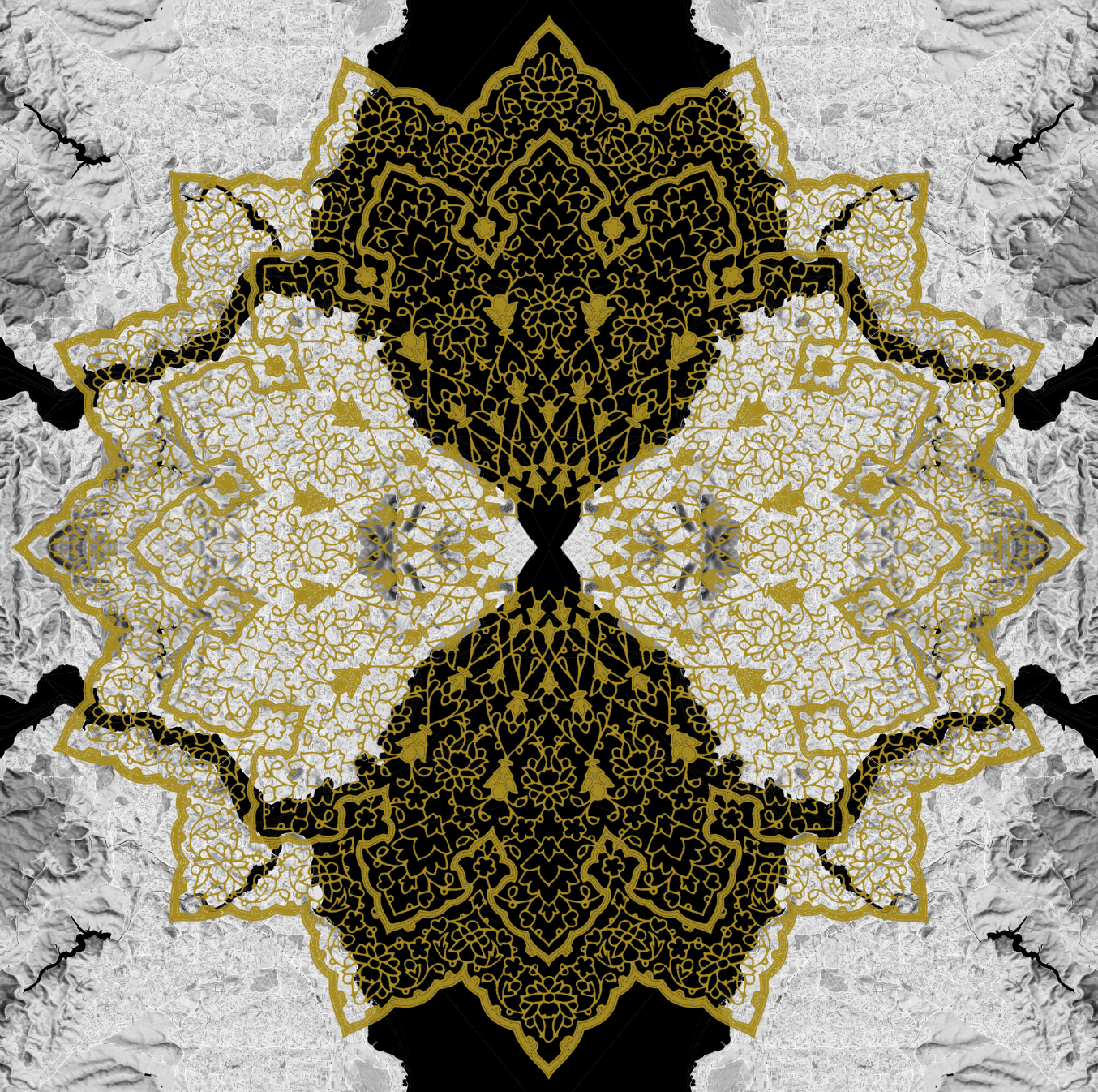October 16 - November 14, 2021
Opening Reception
Saturday October 16, 5-7pm
Free and Open to Public, Masks required indoors
Curator’s Statement
“Luminous” celebrates the inspiriting and illuminating qualities of the world, both around us and within us. It shines light on five artists’ diverse interpretations of luminous, asking each of them to explore any meaning of the word that resonates with her, from the purely physical to the cultural, the personal, and the ephemeral.
Luminous can be expressed through qualities of radiance, reflection, color and shadow. Mo Kelman’s tensile structures, both formal and poetic, are inspired by transient phenomena such as clouds, smoke and flowing water, and play with transparency, light and shadows. Barbara Owen, in her layered abstract pieces, lures viewers in with an exploration of the luscious properties of paint —metallic, iridescent, fluorescent, and reflective — and a dance between the observed and the observer ensues. Pakastani American Saberah Malik, whose signature transparent forms are at once delicate and sturdy, considers luminosity as an inner light that radiates hope as well as strength. That inner light can also hearten and embolden in the face of internal and external challenges. Kate Barber’s conscious choice to work with colors that spark joy, while engaging in a time-intensive and immersive process, helped light the way through the dark winter of 2020. Saman Sajasi, an Iranian American immigrant who navigates dualities and paradoxes that she faces as an outsider, lights her path through her art: she processes memory and nostalgia by overlaying geometric patterns on maps of her lost home.
Visual and emotional lightness; physical qualities such as radiance, reflection, color and beauty; qualities that conjure feelings of wonder, delight, tranquility and accord. Against a dark backdrop, these five artists seek to elucidate, enlighten, and clarify.
Barbara Owen
Website | CV
Biography
Barbara Owen grew up in Maine. She received an Interdivisional BA in Sculpture and Poetry from Bennington College, VT and is a 2020 graduate of the MFA Art Practice program at the School of Visual Arts, NY. Her work has been exhibited at Untitled Art Fair, Miami, The Arts Center, Troy, NY, Wheaton College, Norton, MA, Newport Art Museum, Newport, RI, Jamestown Art Center, Jamestown, RI and UMass Dartmouth’s Art Gallery, New Bedford, MA. In 2016 two paintings were included in exhibitions with the Arts in Embassies (AIE) program, one in Ports Moresby, Papua New Guinea and another in the permanent collection at the American Embassy in Paramaribo, Suriname. Owen has been awarded residencies nationwide, including Dorland Mountain Arts Colony, CA, Woodstock Byrdcliffe Guild, NY, and MASS MoCA/Assets for Artists, MA. Her work has been written about in Big, Red and Shiny, ArtScope Magazine, Take Magazine and other publications. She is the founder of Periphery Space, a project space where she organizes shows, curates and invites guest curators to produce exhibits. She divides her time between Rhode Island and Brooklyn.
Artist Statement
Being invited to participate in this show got me thinking, how does my work become luminous? What are the processes that I must work through to contextualize this? In my practice, I use vibrant colors, shadows, diverse shapes, and textures to make abstract, non-representational objects that I consider to be both painting and sculpture. My aim is to offer the viewer observational possibilities that exist beyond my intention.
I begin with the sensation of materials. My thoughts go first to the properties of paint: metallic silver, lemon yellow, fluorescent pink, the oily shine that India ink leaves behind, iridescent pigments, the quivering of gold leaf before it is applied. Applying any one of these materials to paper, canvas, or wood is transformative as they absorb and reflect light. A simple, vibrant yellow will enlighten a shadow, assuming the role of an emitter. An iridescent material will manipulate the light spectrum for the viewer: stepping left differs from stepping right. The initial colors become variable on the object—the observed changes with the observer and the context of the observation.
But layers and repetition form the contextual basis of my practice. These two concepts can serve as stand-ins for the evidence of time, experience, meaning, or multiple identities of the self. So, what am I illuminating or making luminous with woven strips, layers of cut paper, obscured words, and painted shapes? Labor? Repetition? Process? The strength or limits of any single material? The weight and intricacies of language? Can a word be luminous, even if not perceived as a word?
My intention is to activate a space. Perhaps by draping paper over a stick, that small gap between the paper and the wall or between the viewer and the work.
Kate Barber
Website | CV
Biography
A textile artist of more than 25 years, Kate has recently shifted her focus from weaving functional textiles to making textile art. Since making the shift, she has shown her work in venues across the country and abroad, including: Fuller Craft Museum, Houston Center for Contemporary Craft, Hinoki Gallery (Japan), the Museum of Vancouver (Canada), and the Jamestown Arts Center.
Kate spent two years in the Advanced Textile Arts program at Capilano University in Vancouver, British Columbia. She has studied with distinguished teachers at workshops and craft schools throughout North America and was awarded an Open- Studio Residency at Haystack Mountain School of Craft in Maine.
Her studio and home are in Exeter, RI.
Statement
Through the long months of Covid, making art became a solace and respite for Kate. Many of her Luminous pieces were made through a time-intensive process of construction, destruction, and repair. During those uncertain months, engaging in a repetitive, immersive process became her source of endurance. The making of “Litany,” comprised of almost 600 small handwoven and pleated components, literally became a way of measuring time and staying grounded, while the “Insomnia” series measures — stitch by stitch — the many hours she was awake during the sleepless nights of Spring 2020.
Kate made a conscious decision to work with colors that sparked joy. She wove cloth, cut it up, and stitched it back together to create something new, often working with multiple elements that combine into a larger whole. At a time when the social fabric of our world seems to be unraveling, and we seek ways to mend it, Kate’s work reminds us that the creative acts of destruction and reconstruction are deeply, inextricably linked.
Mo Kelman
Website | CV
Biography
Mo Kelman is a sculptor, fiber artist, and professor emeritus of Art at the Community College of Rhode Island. A recipient of a U.S. National Endowment for the Arts Fellowship, Mo Kelman has exhibited her work at the Cleveland Museum of Art’s May Show; the British Crafts Centre; Korea’s Cheongju International Craft Biennale; the International Shibori Symposia in Nagoya, Japan and Hong Kong; Brown University’s Bell Gallery in Rhode Island; and the Worcester Center for Crafts in Massachusetts. She is a recipient of a 2012 Artist’s Fellowship from the Rhode Island State Council on the Arts.
Statement
I am fascinated by simple building methods, lines, contours, structure and order. I contrive forms that merge physical aspects of architecture, industry and nature. Transparency, lightness and shadows are essential elements for me in my search for a logic that is both formal and poetic.
Current work is inspired by ephemeral phenomena—clouds, weather, smoke and flowing water. Complex forces determine their shapes from moment to moment: air movement, massing of water molecules, temperature change, evaporation, gravity or chemical transformation. I enjoy the irony of anchoring these dynamic forms in place.
Often I build tensile structures, where a pliable membrane is bridled and shaped by cables that apply tension. Using mokume shibori, a shaped-resist fabric dyeing technique, I transform white silk organza into an elastic, translucent, woodgrain-patterned membrane. This skin is tied to structures I build with wood, bamboo and wire, and takes its sculptural form in response to stretching and tethering.
My work continues to reflect my deep sense of foreboding, awe and curiosity in nature as it exists today.
Saberah Malik
Website | CV
Biography
Fiber and textile artist Saberah Malik is best known for her signature transparent textile forms. She uses shibori techniques to explore the intersection between form and color, and makes prodigious use of both flat and spatial disciplines in her work.
Saberah is a Pakistani American visual artist who has made Rhode Island her home for over four decades. Since the inception of her studio practice in 2009 she has exhibited internationally in such disparate places as Turkey, Portugal, New York, California, Canada, and Texas. Her work resides in the collections of academic institutions (Akdeniz University, Antalya, Turkey), corporate entities (Fidelity Investments), and in the homes of individual collectors.
Saberah received her BFA and MFA in Graphic Design from Panjab University, Lahore Pakistan, and her Masters in Industrial Design from Pratt Institute, New York. She has received several distinguished awards including the Award of Excellence from the Surface Design Association, and multiple awards from the Handweaver’s Guild of America. Most recently, she is a finalist for the MacColl Johnson Fellowship in the Visual Arts.
In tandem with her own personal artistic practice, Saberah spreads her passion for fiber arts through teaching and facilitating workshops. She has taught at reputed institutions such as Penland School of Craft, NC; Haywood Community College, NC; Wheaton College, MA; Stonehill College, MA; Panjab University, Department of Textiles, Pakistan; and at a variety of craft guilds.
Statement
From Saberah’s perspective, Luminosity is more than just the emission of light. Saberah’s work explores the luminous through a lens that is both personal and political, engaging with principles of being, identity, change, space and time, causality, and possibility.
Saberah activates her medium of dimensional, transparent textiles to illuminate the heartbreak and helplessness of the victimized. She engages with geo-political events with tenderness, sensitivity and specificity, causing the viewer to come to terms with their own gaunt awareness. Her work uses empathy as a catalyst for understanding.
Saberah pulls back the shroud from the reality of civilian collateral damage in regions of strife. She asks the viewer to face the unimaginable, unquantifiable impacts these events have on the lives of individuals, cultural communities and the environment, and the reality that these vital stories are erased from the proceedings of distant decision makers.
Through her inherently delicate yet sturdy sculpture, Saberah is able to explore the tension in her own definition of luminosity. To Saberah, luminosity is an inner light that radiates hope, reason, and generosity of spirit. And yet, luminosity is also a strength. It is the grit to survive in conditions of prejudice, hostility and natural disaster.
Saman Sajasi
Website | CV
Biography
Tehran-born, Providence-based Saman Sajasi lives on the edge of alienation and liberation while balancing two cultures and walking a straight line. Using maps creatively, Saman makes complex and large-scale woodblock prints on silk to investigate mapping, patterning, feminism, and the effects of cultural divide of East and West.
She fights the uncertainties she faces by using maps to remember, in part to keep intact or restore a cultural identity that is threatened by years of separation from her country to which she cannot return to. Much like her current situation in the States, where freedom of movement beyond its borders is impossible.
These maps name and describe places to which Saman can no longer travel. Whether historical or contemporary, she shapes a unique perspective on a location, while using large woodblock patterns to stamp the inside and outside of the created borders. Changing the shape of the maps, adopting the streets, and creating her own lands and seas, she is not a cartographer; she is transgressive, and works towards finding her own voice.
Statement
As an Iranian American immigrant, politics has defined my life. My family moved to America when I was 12 years old, right after 9/11. We were faced with constant changing immigration laws which prohibited us from traveling outside the country. This was very hard on my father who ended up losing his business in Iran, while in 2008 was effected by the recession. He passed away in 2009 and I found myself immersed in my art, because it was the only constant in my life.
My work represents dualities and paradoxes that I face and navigate as an outsider, fighting two battles on two different grounds. While fighting the perception of the west on my identity as an Iranian woman, I am constantly battling with moral, personal, and cultural dilemmas and facing pressure to push the boundaries as a Middle Eastern woman.
After living in America for 20 years and not being accepted or recognized as a resident, while being restrained from traveling to my home country, I feel at a loss. The use of the maps gave me a feeling of being grounded, a reminder that I come from a land, a place, a location full of pride. These maps bring on memories, and a sense of nostalgia which grounds my soul.
Through my art I find my path; I travel the streets and the memories of the past, regain my heritage and cultural pride and fight the uncertainties, the feelings of being unfaithful to the West or East while living in exile, in-between, undocumented. The patterns represent light, illumination, celebration, while bringing to focus and at the same time cover up dualities and conflicts that I face as an Iranian American woman. The use of the perfect geometric shapes represent the pressure and expectations of being a woman while dealing with conflicts of emotional and rational social anxiety and unfaithfulness to any culture.
Through the process of making my art, I meditate on the feeling of being alienated, the feeling of being precluded as a person from inhabiting or experiencing a condition of establishment. I work through these feelings while I carve and print my large woodblocks and work towards liberation, not only politically but also self imposed ideologies that I constantly battle as an Iranian American Muslim woman living in the West.
